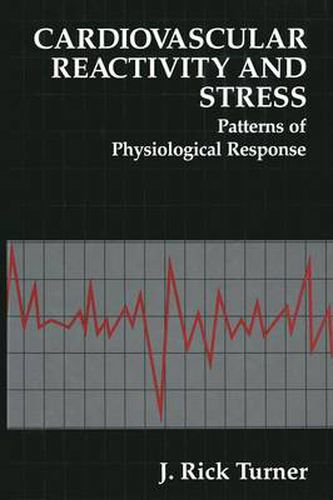Readings Newsletter
Become a Readings Member to make your shopping experience even easier.
Sign in or sign up for free!
You’re not far away from qualifying for FREE standard shipping within Australia
You’ve qualified for FREE standard shipping within Australia
The cart is loading…






This title is printed to order. This book may have been self-published. If so, we cannot guarantee the quality of the content. In the main most books will have gone through the editing process however some may not. We therefore suggest that you be aware of this before ordering this book. If in doubt check either the author or publisher’s details as we are unable to accept any returns unless they are faulty. Please contact us if you have any questions.
This book is an articulate, concise, contemporary introduction to the study of important variables underlying cardiovascular reactivity. Its strength is in the combination of a scholarly but nonpedantic approach to cardiovascular psychophysiology and a solid understanding of be havioral medicine approaches to the study of hypertension. The topics covered are central to the study of relationships between behavior and cardiovascular reactivity; the list of suggested readings at the end of each chapter provides excellent guidance for more detailed study of specific issues. It has now been more than a dozen years since Plenum Press published Paul Obrist’s seminal monograph Cardiovascular Psycho physiology. The volume had a major impact in relating cardiovascular regulation to behaving individuals and in developing thoughtful hy potheses concerning such factors as they might pertain to hypertension. The impact of that work extended across scientific disciplines as well as aross continents. At the time the Obrist book was published, a young psychologist, J. Rick Turner, was completing his Ph. D. thesis in psychol ogy at the University of Birmingham, England, on heart rate reactions to psychological challenge. After continued collaboration for the next several years with his former Ph. D. mentor, Douglas Carroll, Turner joined the Obrist laboratory at the University of North Carolina. Al though Obrist unfortunately died during Turner’s tenure in the labora tory, collaboration continued with Kathleen Light and Andrew Sher wood. The enlightened legacy of the North Carolina laboratory can clearly be seen in this text.
$9.00 standard shipping within Australia
FREE standard shipping within Australia for orders over $100.00
Express & International shipping calculated at checkout
This title is printed to order. This book may have been self-published. If so, we cannot guarantee the quality of the content. In the main most books will have gone through the editing process however some may not. We therefore suggest that you be aware of this before ordering this book. If in doubt check either the author or publisher’s details as we are unable to accept any returns unless they are faulty. Please contact us if you have any questions.
This book is an articulate, concise, contemporary introduction to the study of important variables underlying cardiovascular reactivity. Its strength is in the combination of a scholarly but nonpedantic approach to cardiovascular psychophysiology and a solid understanding of be havioral medicine approaches to the study of hypertension. The topics covered are central to the study of relationships between behavior and cardiovascular reactivity; the list of suggested readings at the end of each chapter provides excellent guidance for more detailed study of specific issues. It has now been more than a dozen years since Plenum Press published Paul Obrist’s seminal monograph Cardiovascular Psycho physiology. The volume had a major impact in relating cardiovascular regulation to behaving individuals and in developing thoughtful hy potheses concerning such factors as they might pertain to hypertension. The impact of that work extended across scientific disciplines as well as aross continents. At the time the Obrist book was published, a young psychologist, J. Rick Turner, was completing his Ph. D. thesis in psychol ogy at the University of Birmingham, England, on heart rate reactions to psychological challenge. After continued collaboration for the next several years with his former Ph. D. mentor, Douglas Carroll, Turner joined the Obrist laboratory at the University of North Carolina. Al though Obrist unfortunately died during Turner’s tenure in the labora tory, collaboration continued with Kathleen Light and Andrew Sher wood. The enlightened legacy of the North Carolina laboratory can clearly be seen in this text.